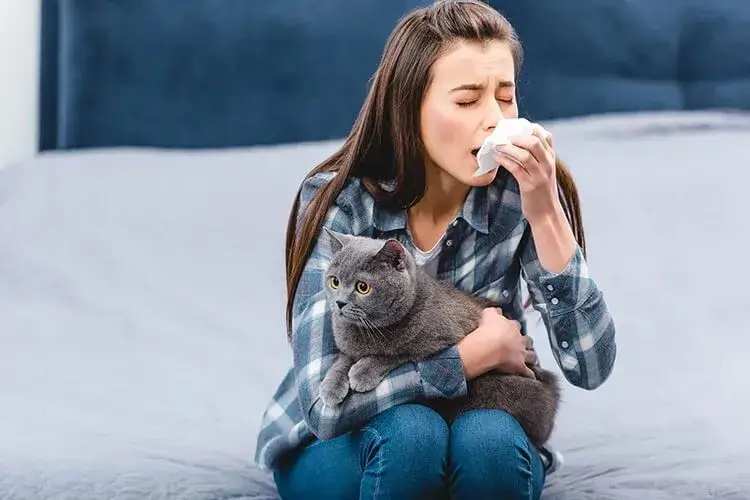With more than 100 million cats and dogs in the United States, and an estimated 25 million Americans who are allergic to them, it is no surprise that there’s a whole lot of sneezing going on.
Don’t Blame The Hair
 Allergic reactions are caused by exposure to proteins that are normally present in secretions from the glands in the skin as well as in the animal’s saliva or urine. Contrary to popular belief, it doesn’t matter whether your pet has short or long hair — It’s the pet’s dander (skin scales) that can cause some of the worst allergic reactions. Although a pet’s fur doesn’t in itself cause allergic reactions — a pet’s hair is a good airborne carrier of pet dander and saliva as well as dust, mold spores, and other allergens.
Allergic reactions are caused by exposure to proteins that are normally present in secretions from the glands in the skin as well as in the animal’s saliva or urine. Contrary to popular belief, it doesn’t matter whether your pet has short or long hair — It’s the pet’s dander (skin scales) that can cause some of the worst allergic reactions. Although a pet’s fur doesn’t in itself cause allergic reactions — a pet’s hair is a good airborne carrier of pet dander and saliva as well as dust, mold spores, and other allergens.
Prevention is the best treatment
Allergists agree that the best treatment for pet allergies, as for all types of allergies, is avoidance of the things that cause allergic reactions. But avoidance doesn’t necessarily mean living without pets, especially when a family member’s allergies are moderate in nature. Dr. Robert A. Wood, Director of the Pediatric Allergy Clinic at Johns Hopkins offers a simple avoidance strategy for those who have moderate animal allergies but don’t want to give up their pets.Dr. Wood’s Strategies:
Strategy 1 – Avoid Allergen Exposure Reduce the overall allergen burden in your home by restricting your pet to non-carpeted areas. Keeping pets out of the bedroom is a sensible strategy since you spend roughly one-third of your time there. If possible, remove carpeting and upholstered furniture, once allergens get into them, they may remain there for as long as six months. Strategy 2 – Remove Allergens from the Air Good ventilation and a high-efficiency, whole-house air purifier help remove allergens already in the home. A high-efficiency media air purifier can remove up to 95% of airborne particles as small as 1/25,000th of an inch. Strategy 3 – Groom Your Pet Regularly You can help make your pets less of an allergy source by keeping them groomed and clean.Tips from the American College of Allergy, Asthma & Immunology (ACAAI) and the Asthma and Allergy Foundation of America (AAFA)
- Avoid hugging and kissing pets if you’re allergic to them.
- Wash hands after handling a pet to help avoid the spread of dander.
- Remove litter boxes from direct contact with pet allergy sufferers and place them in areas away from vents.
- Wear a dust mask to vacuum. Use a vacuum with a HEPA (high-efficiency particulate air) filter if possible.
- Wash your pet on a weekly basis. Check your local pet store for shampoos that may neutralize or inactivate allergens present on your pet’s skin.


